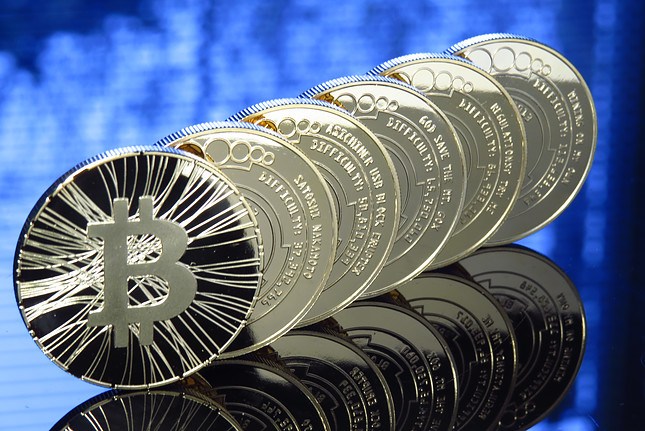Energy prices surged higher yesterday amid ongoing uncertainty in the Middle East. However, in the absence of escalation, oil fundamentals suggest that we should see a pullback in oil prices.
Energy – Geopolitical risks linger
Oil markets strengthened yesterday with ICE Brent settling almost 1.7% higher on the day. Lingering tension in the Middle East continues to provide support as the market awaits Israel’s response to Iran’s recent attack. In addition, a Hezbollah drone strike near the Israeli Prime Minister’s private residence will not have helped to ease tensions. On the demand side, banks in China cut their loan prime rates, which would be welcome news for borrowers. While the cut was unsurprising, the reduction was slightly larger than the market expected.
Tensions in the Middle East continue to be reflected in the Brent options market. The volatility skew shows that calls are becoming increasingly more expensive than puts as participants buy protection in the event of a price spike, given the uncertain geopolitical environment. This also ties in with the larger traded volumes we have seen in call options recently.
However, assuming no supply disruptions in the Middle East, the oil balance looks increasingly comfortable through 2025 with OPEC+ set to gradually bring 2.2m b/d of oil supply back onto the market. This should leave the market in surplus, which will not only keep pressure on flat prices through next year but should also mean further weakness in time spreads. Essentially with the market returning to a sizeable surplus, we should at least see the front end of the curve moving into contango.
European natural gas prices also strengthened yesterday with Middle East tensions providing support. Front-month TTF rallied more than 2% to settle above EUR40/MWh. While the market is nervous about potential LNG supply disruptions due to escalation in the region, European fundamentals remain comfortable. Storage continues to tick higher at more than 95% full, above the five-year average of around 92% for this time of year. Although, assuming a normal start to the heating season, it is looking less likely that we hit 100% full storage before the heating season starts.
Metals – Gold hits another all-time high
Gold extended its rally to another fresh record high yesterday, after breaching $2,700/oz last week, amid escalating tensions in the Middle East and ahead of the US election. Investors are seeking safety in gold as Israel has been discussing its attack on Iran after a Hezbollah drone exploded near PM Benjamin Netanyahu’s private home at the weekend.
Gold is one of this year’s strongest performing commodities, with gains of more than 30% so far, supported by rate cut optimism, strong central bank buying and robust Asian purchases. Safe haven demand amid heightened geopolitical risks as well as uncertainty ahead of the US election in November have also supported gold’s record-breaking rally this year.
Agriculture – Mixed weather conditions in West Africa
The weather conditions in the major cocoa-producing regions of West Africa remain uncertain. Rains in Cameroon and Nigeria have led to black pod disease, increasing farmers' costs as they need to spray more chemicals. In contrast, the weather has turned more favourable in the Ivory Coast and Ghana, with rains and sunshine continuing to help pod development.
The USDA’s latest crop progress report shows the corn harvest continues to progress well with 65% of the crop harvested, higher than the 55% seen a year ago and above the five-year average of 52%. As for the soybean crop, 81% of the area was harvested, up from 72% at the same stage last year and a five-year average of 67%. Finally, 73% of the winter wheat area has been planted, compared to 74% at the same stage last year and a five-year average of 76%.
The USDA’s weekly export inspection data for the week ending 17 October shows that the US exports for corn and soybeans remained strong while wheat shipments slowed over the last week. US weekly inspections for corn stood at 999.8kt in the period mentioned above, up from 506.6kt in the previous week and 472.4kt reported a year ago. Similarly, soybean export inspections stood at 2,433.5kt over the week, up from 1,907.5kt in the previous week but down from 2,628.7kt a year ago. For wheat, US export inspections came in at 268.4kt, compared to 380.1kt last week and 169.5kt for the same period last year.
Read the original analysis: The commodities feed: Middle East uncertainty lingers
Content disclaimer: This publication has been prepared by ING solely for information purposes irrespective of a particular user's means, financial situation or investment objectives. The information does not constitute investment recommendation, and nor is it investment, legal or tax advice or an offer or solicitation to purchase or sell any financial instrument. Read more here: https://think.ing.com/content-disclaimer/
Recommended Content
Editors’ Picks

EUR/USD recovers toward 1.0600 on renewed USD weakness
EUR/USD regains its traction and rises toward 1.0600 after spending the early European session under pressure. The renewed US Dollar (USD) weakness following disappointing housing data helps the pair push higher, while markets keep a close eye on geopolitics.

GBP/USD stays near 1.2650 after BoE Governor Bailey testimony
GBP/USD trades in the red at around 1.2650 on Tuesday. Although BoE Governor Bailey said a gradual approach to removing policy restraint will help them observe risks to the inflation outlook, the sour mood doesn't allow the pair to gather recovery momentum.

Gold extends recovery toward $2,640 as geopolitical risks intensify
Gold price builds on Monday's gains and rises toward $2,640 as risk-aversion grips markets amid intensifying geopolitical tensions between Russia and Ukraine. Meanwhile, the 10-year US Treasury bond yield is down more than 1% on the day, further supporting XAU/USD.

Bitcoin Price Forecast: Will BTC reach $100K this week?
Bitcoin (BTC) edges higher and trades at around $91,600 at the time of writing on Tuesday while consolidating between $87,000 and $93,000 after reaching a new all-time high (ATH) of $93,265 last week.

How could Trump’s Treasury Secretary selection influence Bitcoin?
Bitcoin remained upbeat above $91,000 on Tuesday, with Trump’s cabinet appointments in focus and after MicroStrategy purchases being more tokens.

Best Forex Brokers with Low Spreads
VERIFIED Low spreads are crucial for reducing trading costs. Explore top Forex brokers offering competitive spreads and high leverage. Compare options for EUR/USD, GBP/USD, USD/JPY, and Gold.